[Ebook Việt Hóa] New Plant Parent - Darryl Cheng, Chi Pilea
[Ebook Việt Hoá] New Plant Parent (Darryl Cheng) – Phần 02 – Pilea (cây thuộc chi Pilea)
- Nguồn: [Ebook] New Plant Parent: Develop Your Green Thumb and Care for Your House-Plant Family – Darryl Cheng
- Biên tập: Dũng Cá Xinh (Tháng 01/2022)
- Dịch: Team Codai.net
English
Pilea
Pilea peperomioides is one of the most desired house plants. As it became popular, commercial growers scrambled to get stock, and individuals with some space and good light were selling individual plants in classified ads for up to $80 for a small 4-inch pot! Fortunately, a healthy plant will put out pups (little baby versions of itself) in a relatively short time, so you could easily trade for one among a group of plant enthusiasts (which is how I acquired mine).
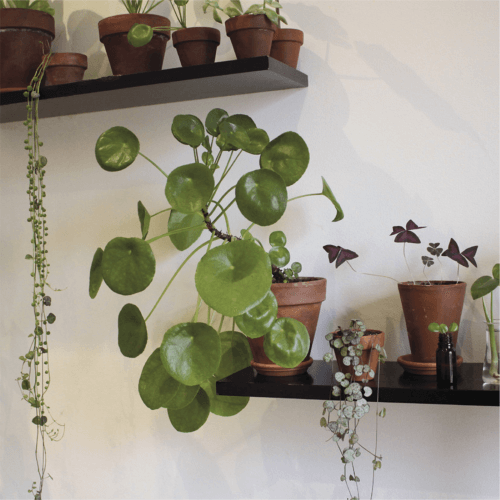
Survival strategy
If you fell into the trap of wanting to put this plant on display on a shelf far away from any windows, be prepared to pick up dead foliage as older leaves become yellow and fall off. Anything less than a daily high of 150 foot-candles will cause the plant to adjust by aborting older leaves. In a few months, if the plant didn’t succumb to root rot because its soil stayed moist for too long, you would be left with no more than two to three leaves growing very slowly at the top of a bare stem, and the constant yellowing and dying off of older leaves might cause you to worry. It’s just typical adjustment to low light. The risk of root rot can be mitigated somewhat with soil aeration.
Growth strategy
Give pilea a nice view of the sky and even a couple of hours of sun, and it will grow nicely. Older leaves will still become yellow and fall off, but the overall plant will remain lush, with leaves growing as large as 4 inches in diameter. When pilea is growing with more than 200 foot-candles, it tends to use up soil moisture within a few days. Keep the soil evenly moist and well aerated during growth. A special note on aeration—be very careful, as you do not want to damage the underground runners that will eventually become pups.
Subjective life span
A healthy pilea plant can send up six to eight pups within the first year of ownership. You will then have your hands full with pup separation and transplanting. At this time, the original mother plant will start looking somewhat tired, having dropped several of her oldest leaves. If you’re brave, you can experiment with cutting the mother plant’s main stem and getting it to root, while the stump continues to produce pups.
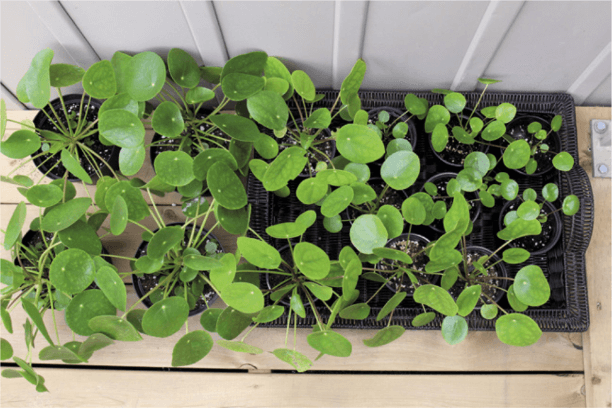
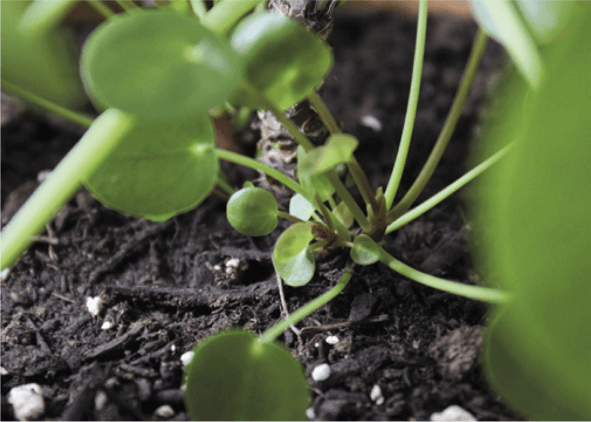
Observations from Pilea Parenthood
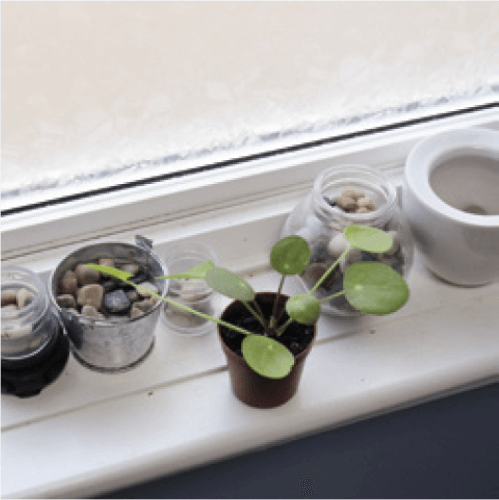 Day 1
Day 1
I finally got my hands on a Pilea peperomioides! A local plant lover posted one of her pups for trade on a Facebook group, and I just happened to have the neon pothos she was looking for.
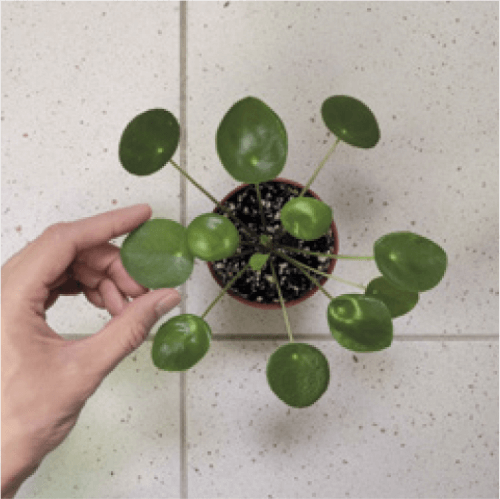 4 months
4 months
A few new leaves have grown after the first repotting, from a 2-inch pot up to this 3½-inch pot. The soil is the usual: peat moss with added perlite.
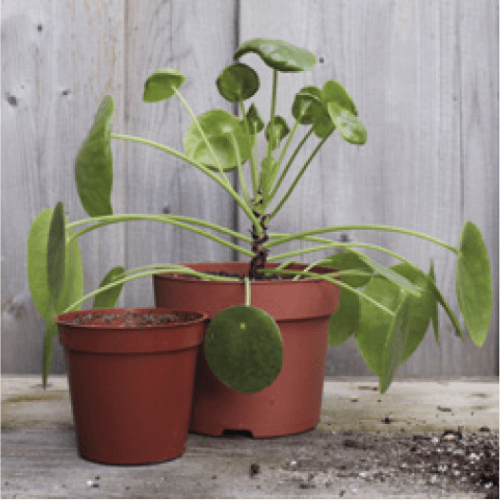 8 months
8 months
Another pot graduation! Now we’re up to a 5-inch nursery pot. During this repotting session, I found a nice surprise . . .
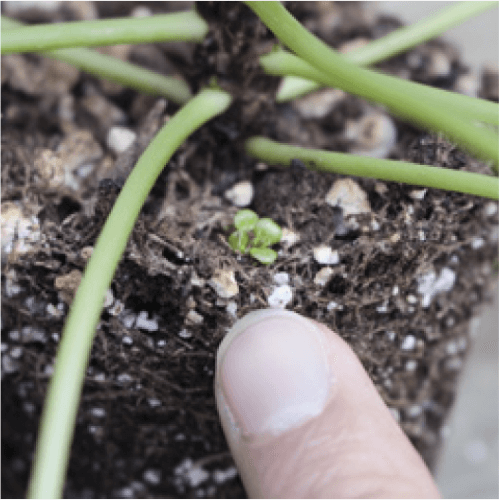
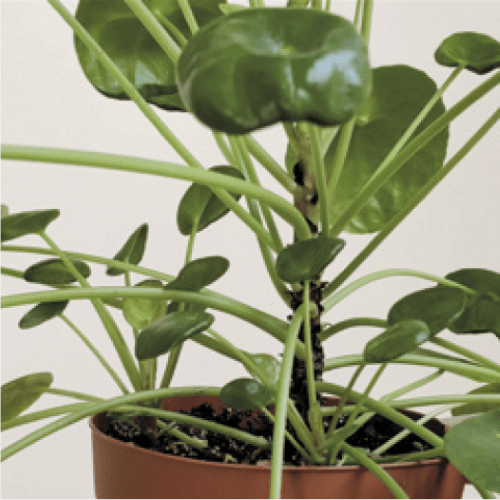 10 months
10 months
Since the repotting, two pups have been growing strong. At this size, they are ready to be separated into their own pots.
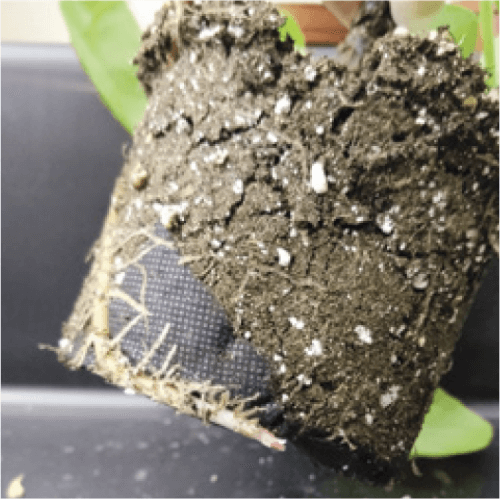 1 year
1 year
Upon removing the mother plant from its pot, I found some younger pups in earlier stages of development and two more runners under the soil, looking for light, so they too can become pups. If this runner crawling along the bottom of the pot had found a drainage hole, it would have developed into a pup underneath the pot!
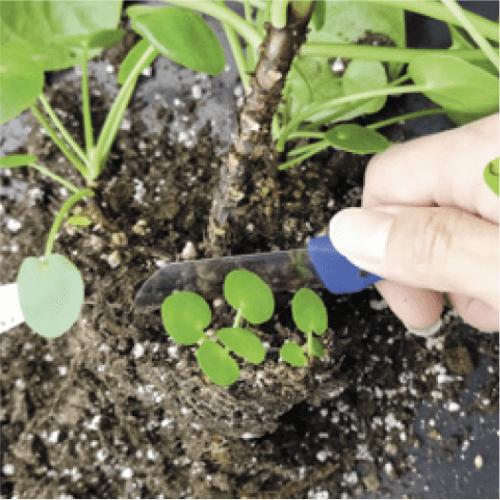
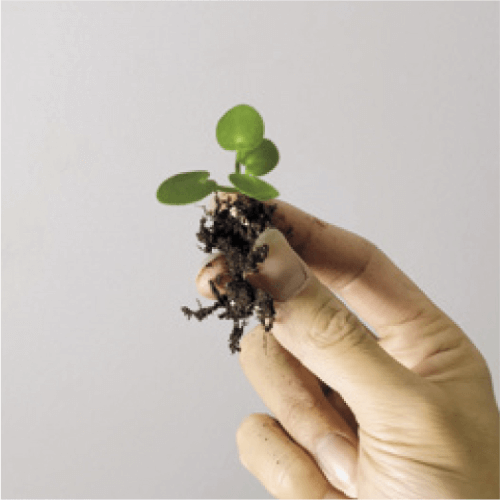
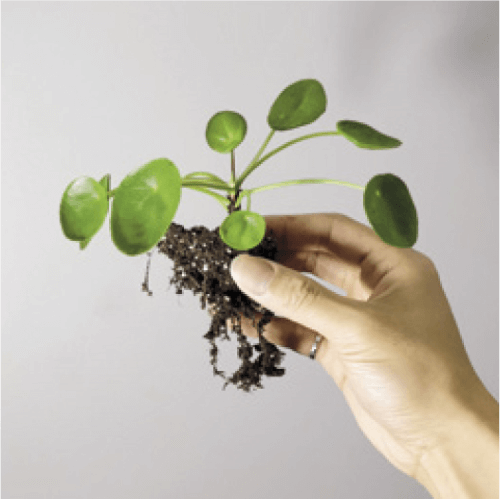
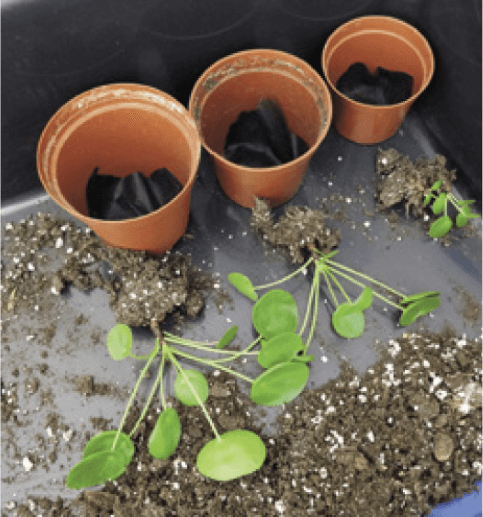
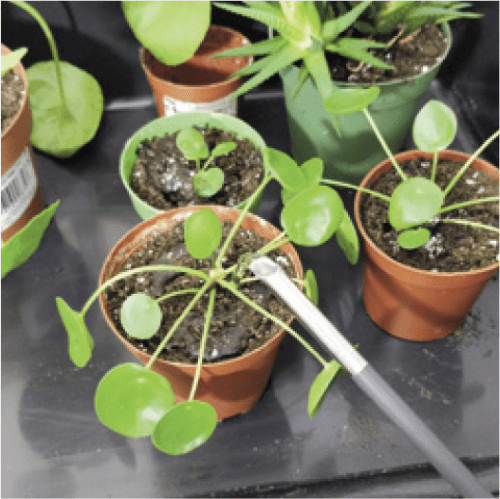
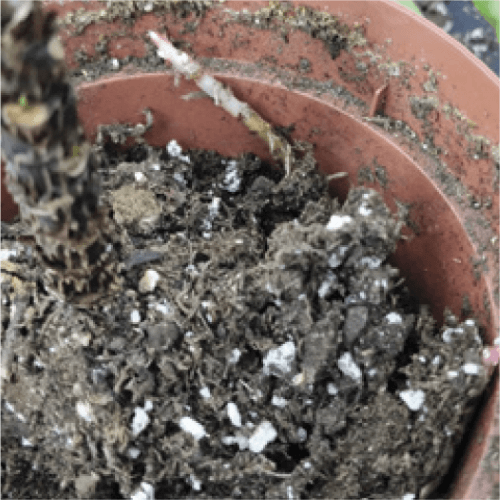
1 year, 1 month
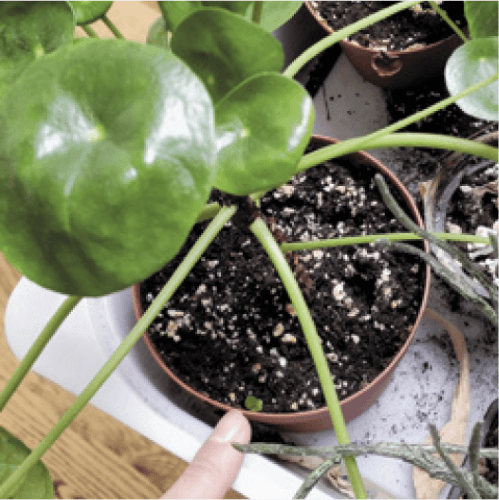
1 year, 3 months
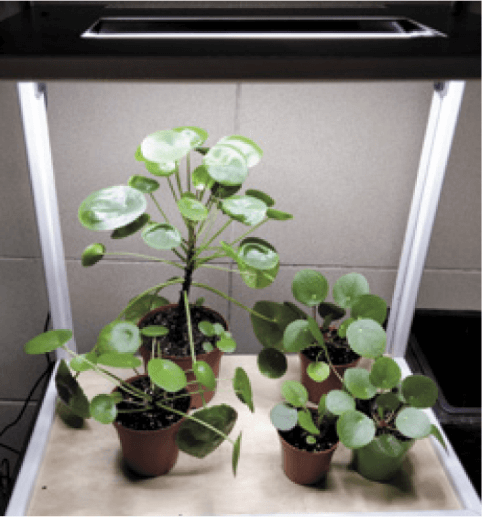
Light and Its Effect on Pilea Growth
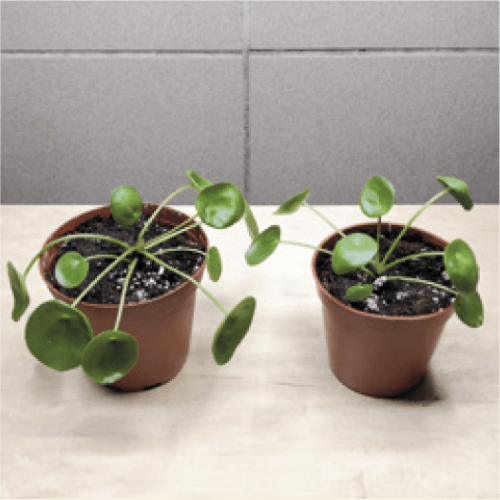
Day 1
Upon separating and transplanting the first round of babies, I was curious to see if there would be any noticeable differences between growing a young pilea under natural light (under my skylight) and using a LED grow light. Here’s my assessment of the light characteristics:
- Duration: Intensity rises and falls with the day length. Since this experiment was done in the winter, day length at my latitude was around 9 hours.
- Intensity: The sun never crossed into view, so the light was exclusively from the sky. The intensity peaked on average at 200 foot-candles.
- Duration: I set the timer to 12 hours on and 12 hours off.
- Intensity: The grow light was adjusted to sit at a height of about 6 inches away from the tallest leaf. At this distance, the light intensity reading was 800 foot-candles.
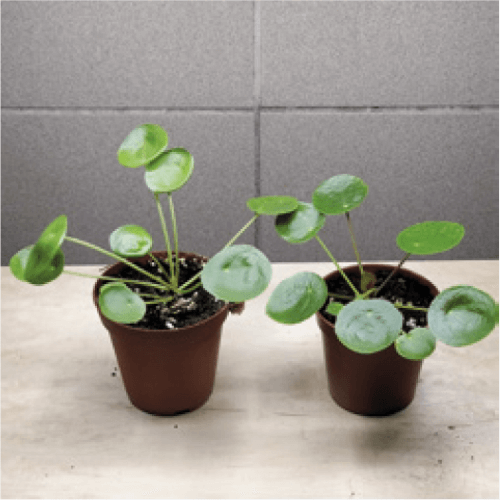
Day 30
The pilea grown under natural light (left), which we would call “low light” at best, has quite a bit more doming of leaves. The pilea grown under the grow light (right) has the desired flatter leaves.
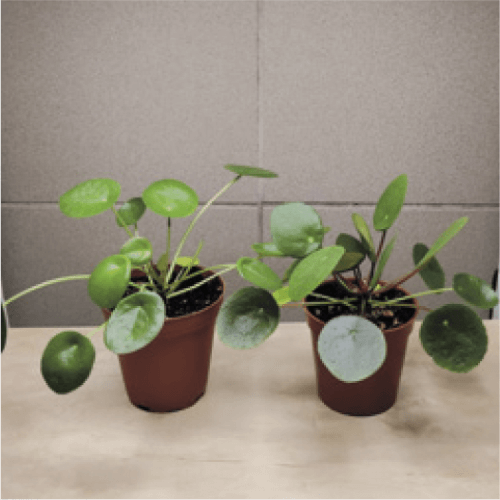
Day 92
Although the days are becoming longer, the natural-light pilea (left) still exhibits more doming of leaves than the pilea grown under the grow light (right).
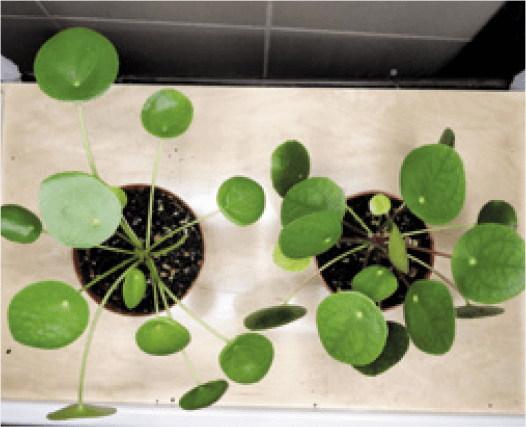
The pilea grown under the grow light (right) has more compact stems, as they did not need to reach farther for stronger light.
Tiếng Việt
Đang cập nhật
![[Ebook Việt Hoá] New Plant Parent (Darryl Cheng) – Phần 02 – Pilea (cây thuộc chi Pilea) [Ebook Việt Hoá] New Plant Parent (Darryl Cheng) – Phần 02 – Pilea (cây thuộc chi Pilea)](https://vn1.vdrive.vn/codai.net/2021/02/22-pilea.jpg)


